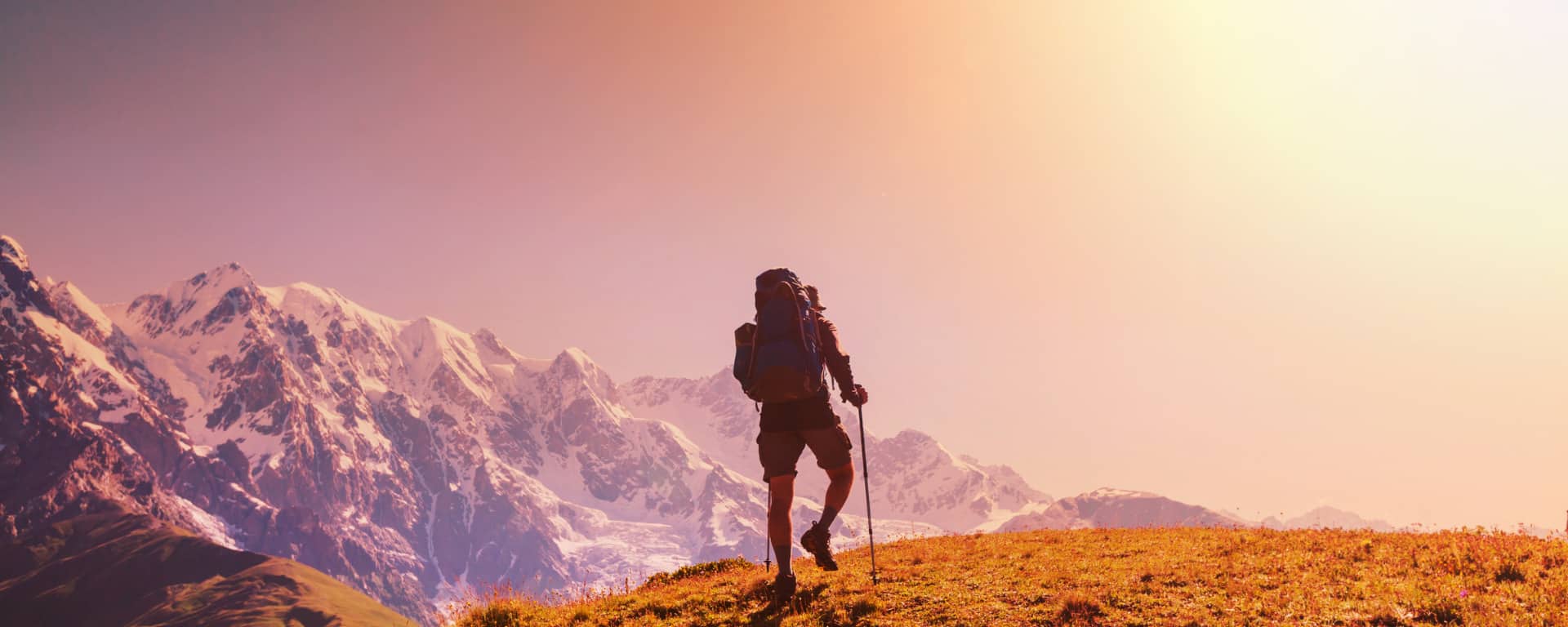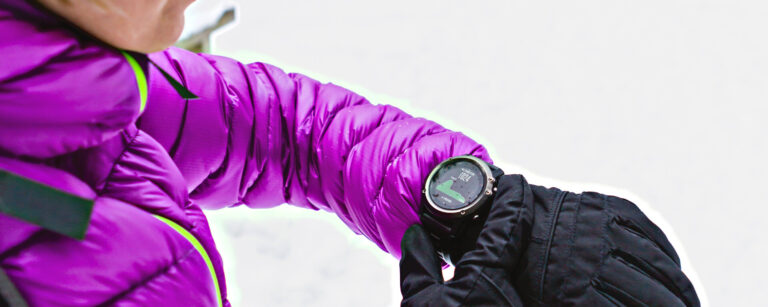Hiking For Beginners 101 – 9 Essential Tips
Whether you’re looking for a photo for your Insta feed or just want to escape the hustle and bustle of the city, hiking is a great activity. The beautiful scenery, invigorating fresh air, and workout will have you smiling in no time.
But hiking for the first time can be daunting. Knowing what to wear, where to go, and what to bring can be tricky.
Before you lace up your hiking boots and hit the trails, there are a few critical things you need to know. Our hiking for beginners guide covers 9 hiking tips that will help make your hike more enjoyable.
Without further ado, let’s get started!
Hiking For Beginners 101 – 9 Essential Tips
See our list of 9 essential hiking tips for beginners.
- Planning Your Hike
- Find a Hiking Partner
- Share Your Hiking Plan
- Essential Hiking Gear
- How to Pack Your Bag
- How To Stay Safe While Hiking
- Hiking is Not a Race
- Hiking Trail Etiquette
- Leave No Trace
1) Planning Your Hike
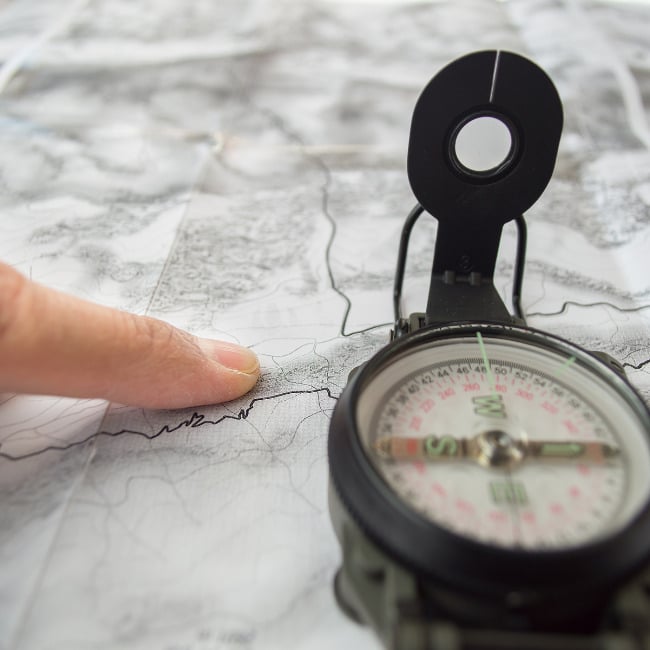
The best hikes are the ones that are well planned. Decide where you want to go, and then do your research. Check things like weather conditions, terrain difficulty, and trail closures. Once you have all the information, you can create a plan and start getting excited about your hike!
Picking the Right Hike
Hiking is a great way to get outdoors, but not all hikes are created equal. When you’re planning your hike, make sure to pick a trail that’s right for your skill level. If you’re a beginner, look for short hiking trails with gentle terrain. Once you’ve hiked a few times, you can start to challenge yourself with longer and more difficult courses.
Things to Consider
- Length of Hike
- Elevation Change
- Grade (steepness)
- Your Fitness Ability
I recommend less than 5 miles for a beginner hiker with minimal elevation change.
When to Go
The best time to hike depends on a few things like the weather, animals that live in the area, and how crowded the trails are. Generally, the best time to hike is early morning when it’s not as hot. Before heading out, check the weather forecast and plan accordingly.
Things to Consider
- Time of year
- Time of Day
- Weather forecast
- Wildlife
2) Find a Hiking Partner
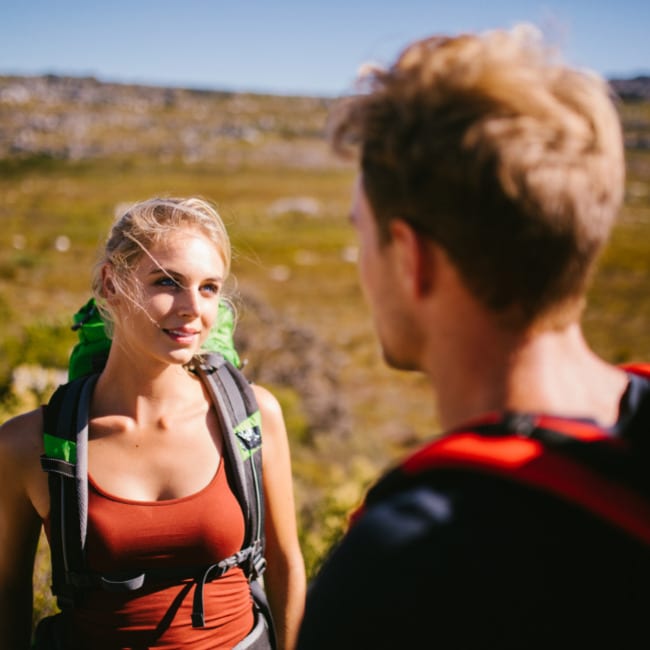
One of the best things about hiking is that it can be done solo or with a group. If you’re new to hiking, I recommend finding a partner or group to hike with. Hiking with someone else is a chance to make new friends and learn from their experiences. It’s more enjoyable, and there is safety in numbers.
Where to Find Hiking Partners
- Meetup
- AllTrails Hiking Projects
- Facebook Hiking Groups
- Your Local Hiking Club
Whether you already have hiking friends or want to meet new people, there are plenty of ways to find hiking partners. Hiking clubs and groups are a great way to connect with other beginner hikers in your area.
3) Share Your Hiking Plan
Whether hiking alone or with a group, it’s always a good idea to tell someone where you are going. If something happens, people will know where to look for you. If you’re hiking alone, consider leaving a note in your car with your hike information. You can also check in with friends and family along the way to let them know you’re safe.
How to Share Your Hike Plan
- Leave a note in your car
- Check-in with friends and family
- Use a Hiking App like Cairn
Letting people know your hike plan is simple and only takes a few minutes. But it could be the difference between life and death if something happens while you’re on the trail. A handheld GPS can also help to plan your route, track your location, and be used in an emergency to contact authorities.
4) Essential Hiking Gear
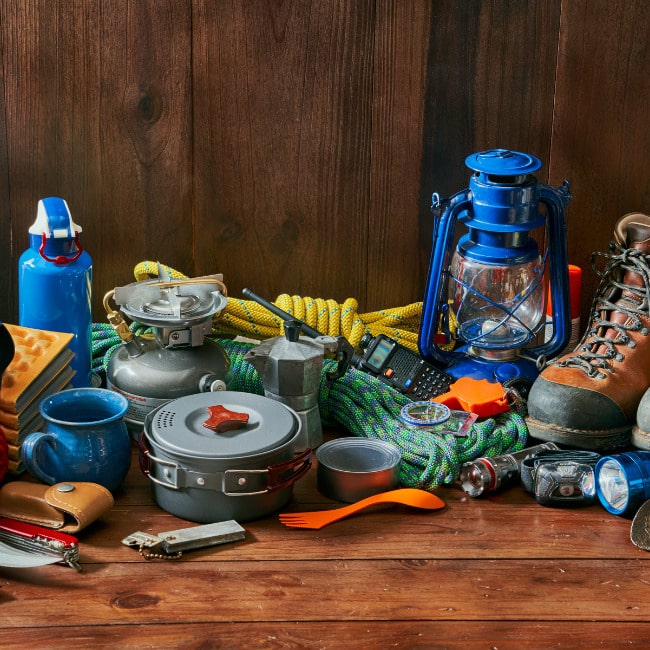
One of the great things about hiking is that you don’t need a lot of gear to get started. But a few essential items will make your hike more enjoyable. Make sure to pack the essentials before heading out on the trail.
Hiking Essentials
Footwear
One of the most essential pieces of gear for hiking is your footwear. Hiking boots or hiking shoes should be comfortable, provide support, and have good traction. A good pair of hiking socks can also make a big difference. They will help to reduce blisters and keep your feet comfortable.
Hiking Backpack
A hiking backpack is an essential piece of gear. It needs to be the right size for your body and have a comfortable harness. I recommend a pack with an internal frame and a minimum capacity of 30L.
First Aid Kit
A first aid kit is essential for any hike, even if you’re just going for
Hiking Clothing
What you wear on your hike will depend on the weather conditions. You should dress in layers to add or remove clothing as needed. Be sure to pack a rain jacket and extra clothes.
Hiking Poles
Hiking poles can help to reduce fatigue and provide stability on uneven terrain. They are beneficial if you’re hiking uphill or carrying a heavy backpack.
First Aid Kit
A first aid kit is essential for any hike, even if you’re just going for a short day hike. Accidents happen, and it’s always better to be prepared. Your first aid kit should include bandages, gauze, tape, antiseptic wipes, pain relievers, and tweezers.
5) How to Pack Your Bag

Packing your bag well is vital for a comfortable hike. Start by loading the heavier items first, followed by the lighter items. I like to keep water in a side pocket where I can pull it out quickly. Any snacks and my cell phone go in the top pocket. When I carry my camera, I use a strap so that it doesn’t get in the way, and can pull it out quickly to take photos. If you are heading out on a multi-day hike, you may consider using compression bags so that everything can fit. I’m also a huge fan of Ziploc bags; they keep everything organized and dry.
What to Pack
Sun Protection
Pack sunscreen, a hat, and sunglasses to protect yourself from the sun. The sun is harsher at high altitudes, and reflection off of snow can also increase your risk of sunburn.
Navigation Tools
A map and compass are essential for any hike, even if you’re familiar with the area. GPS devices can also be helpful, but they should be used in addition to a map and compass.
Food and Water
You must bring food and water on any hike, even a short one. Pack more food and water than you think you’ll need in case your trek takes longer than expected.
6) How To Stay Safe While Hiking

Hiking is a great way to get outside and enjoy the beauty of nature. But it’s essential to know the risks before heading on the trail. Here are a few safety tips to keep in mind:
Animal Safety
Depending on where you are hiking, animals may be an issue. Bears, snakes, and other wildlife can pose a threat. Educate yourself on the animals in your area and what to do if you encounter one. A bear bell, bear spray, and an emergency whistle can help to deter animals.
Check the Weather
Check the weather forecast before you go and ensure the conditions are safe for hiking. You may need to modify or cancel your hike if a storm is coming.
Tell Someone Your Route
Let someone know where you plan to hike, how long you will be gone, and when to expect you back. Some trails may require you to fill in an itinerary form before beginning your hike. Double check the rules and regulations in your area before leaving.
7) Hiking is Not a Race

This took me some time to learn when I first started hiking. I am a very goal-oriented person. I like to set targets for myself. When I first started hiking, I would set time limits and challenge myself to move faster. I will reach the top within x minutes. I still do this sometimes, but only when I am training.
Hiking is a marathon, not a sprint; when on the trail, it’s more about plodding along than pushing yourself to your limit. When hiking with my kids, I tell them to focus on moving continuously. One foot in front of the other and moving continuously at a moderate pace. Stopping and starting going up a steep slope is not fun.
Nature is a beautiful place, and it’s about enjoying the journey rather than trying to get to the finish line (there is a good life lesson in that as well). Take breaks and enjoy what’s around you instead of trying to get to the end of the hike.
8) Hiking Trail Etiquette

You are not the only person on the trail. Be courteous to your fellow travelers, whether they are hikers, bikers, or horse riders. Say hello as you pass each other on the course. When coming up from behind, let people know you are there. If you are moving slower, find a safe spot to move off to the side when people want to pass.
In Japan, where we hike most often, greet each other in Japanese (おはようございます, こんにちは or お疲れさまでした).
If hiking with a group, do not block the trail for others. Single file is often best when passing others on the way up or downhill. If you stop to take photos, move off to the side so as not to block traffic flow.
9) Leave No Trace
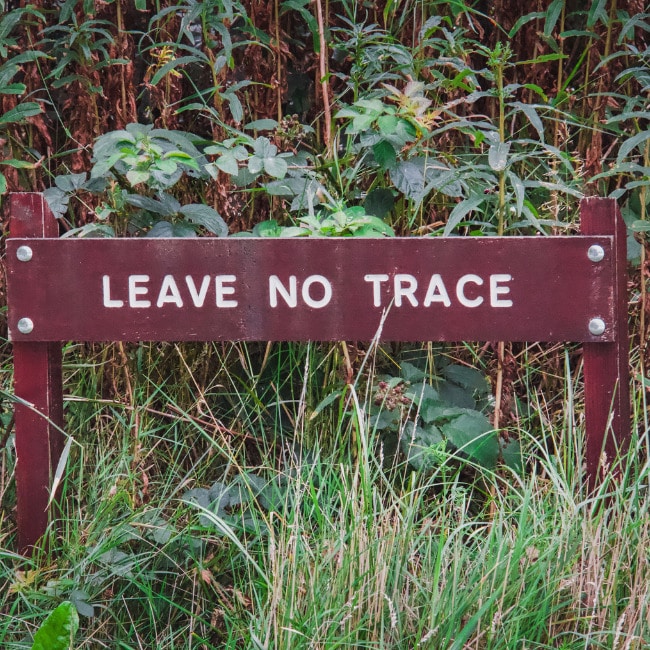
The leave no trace principle is something all hikers should be aware of and practice. Leave no trace means leaving the natural environment as undisturbed as possible, as though you had never been there. This means you pack out any garbage you generate, stick to trails, and don’t disturb wildlife.
There are 7 leave no trace principles:
- Plan Ahead and Prepare
- Travel and Camp on Durable Surfaces
- Dispose of Waste Properly
- Leave What You Find
- Minimize Campfire Impacts
- Respect Wildlife
- Be Considerate of Other Visitors
Following these principles can help protect the hiking trail and environment for future generations.
What is Hiking?
Hiking is a long walk or trek usually undertaken for recreation or exercise. Still, it can also be done as part of a journey. Hiking in the UK generally refers to walking up mountains. In North America, it means walking in more natural areas such as forests or hills. Hiking is different from walking because it is usually done on rougher terrain and often includes walking up and down hills. Hiking is also different from running because it is done at a slower pace and for longer distances.
Types of Hikes
Day Hiking
A day hike is a hike that can be completed in one day and does not require an overnight stay. Day hikes are usually shorter than multi-day hikes and do not require as much planning or preparation. Day hikes can be done alone or with a group and are a great way to get some exercise.
Backpacking
Backpacking, or trekking, is a type of multi-day hike where participants carry all their supplies in a backpack. Backpacking trips can last for days or weeks and usually require more planning than day hikes. Backpackers must be prepared for all weather conditions and carry all their food, water, and shelter.
Thru-Hiking
A thru-hike is a long-distance hike that begins and ends at different locations. A thru high can last for weeks or even months and is typically done on trails such as the Appalachian Trail or the Pacific Crest Trail. Hikers undertaking a thru-hike must be highly prepared, as they will be hiking for extended periods.
What to Look for in Beginner Hiking Trails
When you are first starting out, it is essential to find trails that are suitable for your skill level. Look for routes that are well-marked and easy to follow. Hiking for beginners can be frustrating if the route is too challenging. Beginner hiking trails are typically shorter and have little to no elevation gain.
What to Look For
- Less than 250m Elevation Gain per mile
- Less than 5 miles
FAQ
Hiking for beginners route length
Beginner hikers should look for a hiking route less than 5 miles. Anything longer than that may be too difficult.
How much elevation gain is too much?
For a beginner hiker, an elevation gain of 250m per mile is the recommended maximum.
What if I get lost?
If you get lost, stay calm and try to find your way back to the hiking trail. If you cannot find the course, call for help.
What should I wear?
Wear comfortable clothing that you don’t mind getting dirty. Make sure to wear sunscreen and a hat if it is sunny.
How do I hike up a hill?
Walk slowly and take breaks as needed. It is essential to pace yourself, so you don’t get too tired.
How do I hike downhill?
Walk carefully and take your time. Downhills can be more challenging than uphills, especially over long descents. My knees are often sore after a day of walking downhill. I find taking your time and controlling each step down helps to reduce jarring. I also alternate which leg I step down with and sometimes even turn partially sideways so I am not facing directly down the hill. If the slope is particularly steep, I will often descend in a zig-zag pattern, cutting back and forth across the trail. If you find walking downhill challenging, consider a pair of trekking poles.
When is the best time of year to hike?
The best time of year to hike depends on where you live. Generally, the best time to walk is in the spring or fall when the weather is mild.
Final Thoughts
Hiking for beginners can seem like a daunting task when you first start out. You don’t know where to go, who to go with and what you will experience. The 9 hiking tips above will get you started on your hiking journey, and before you know it, you’ll be hooked! Hiking is a great way to get exercise, fresh air, and spend time with nature. So what are you waiting for? Get out there and start exploring!
See You on the Trail!

